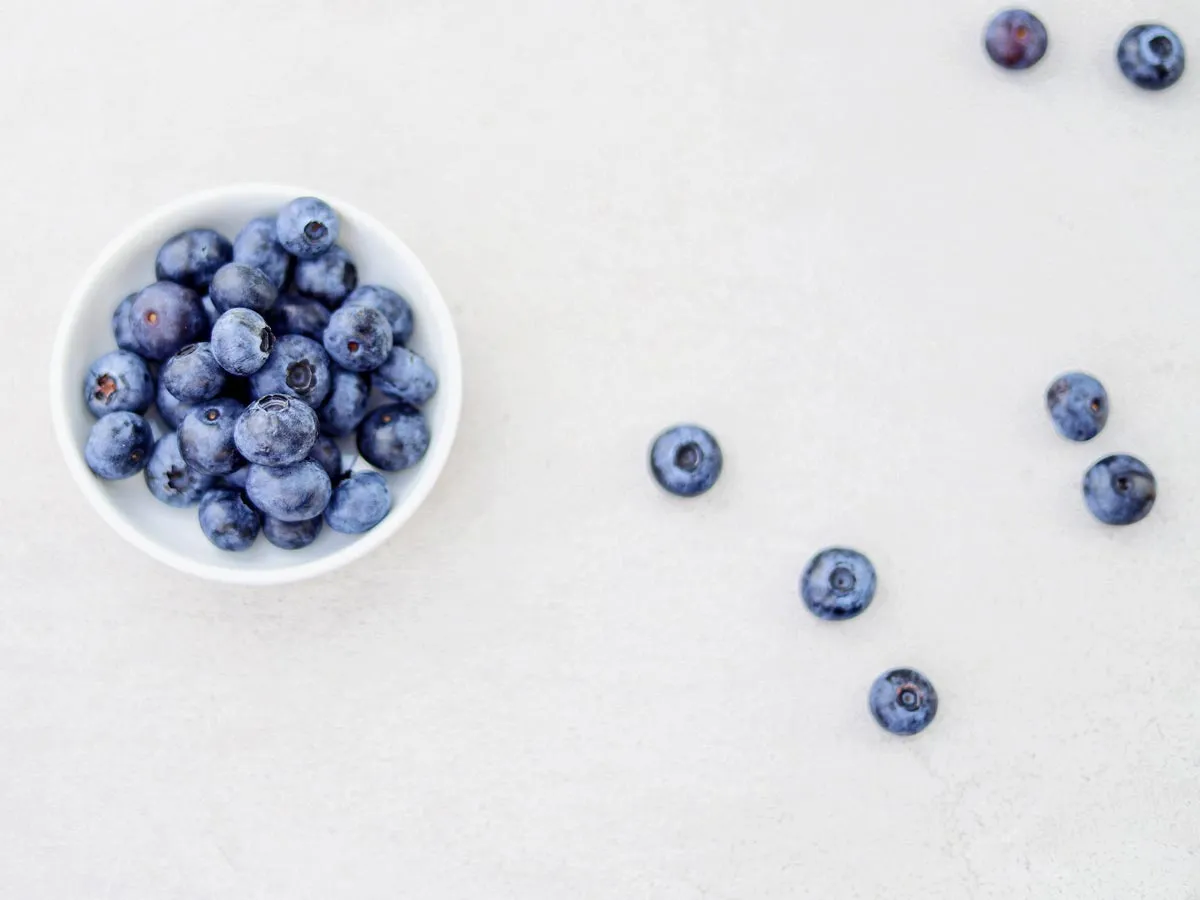
Blueberries, hailed as the “king of berries,” have become a beloved fruit in recent years. Claims about the benefits of eating blueberries range widely: they’re good for your eyes, can prevent myopia, help with anti-aging, and even promote thyroid health. But can a small berry really offer so many benefits?
1 What Nutrients Do Blueberries Have?
Blueberries are indeed nutrient-dense. They are rich in vitamins and minerals such as iron, zinc, magnesium, potassium, and manganese. Blueberries are also high in dietary fiber, promoting gut health, and they are low in calories, making them a tasty and healthy choice for those dealing with constipation or looking to lose weight. However, the real fame of blueberries comes from a type of flavonoid known as anthocyanin.
Anthocyanin is a water-soluble pigment found in dark-colored fruits and vegetables, such as blueberries, black goji berries, purple cabbage, mulberries, bayberries, purple sweet potatoes, and black rice. Research suggests that anthocyanins can help eliminate free radicals in the body, potentially aiding in anti-aging and preventing chronic diseases like cancer.
2 Are the Benefits of Blueberries Real?
Do these nutrients actually link to the touted benefits? Let’s break it down.
a. Are Blueberries Good for Your Eyes and Can They Cure Myopia?
Blueberries contain anthocyanins, which have antioxidant properties. Many eye diseases are related to oxidative damage, so anthocyanins might offer some protection. Some studies have found that oral consumption of anthocyanins can help alleviate eye fatigue and slow the progression of glaucoma. However, curing myopia is a different story. Myopia is irreversible, and there is no sufficient evidence that anthocyanins can improve this condition.
b. Can Blueberries Whiten Your Skin?
Some claims suggest that blueberries can whiten skin due to their vitamin C content, which can inhibit tyrosinase activity and reduce melanin production. However, blueberries are not particularly high in vitamin C. For instance, 100 grams of blueberries contain about 9.0-9.7 milligrams of vitamin C, comparable to apples, pears, and grapes. In contrast, 100 grams of winter jujubes contain 243 milligrams of vitamin C. So, relying on blueberries to boost your vitamin C intake for skin whitening is not very effective. Whitening also depends on genetics, sun protection, and other factors.
c. Can Blueberries Promote Thyroid Health?
Some studies suggest that the vitamin C in blueberries can promote thyroid health. However, as mentioned earlier, blueberries are not particularly high in vitamin C, and this vitamin does not have a specific therapeutic effect on the thyroid. If you have thyroid issues, it’s essential to seek medical advice and follow prescribed treatments. Blueberries can be part of a healthy diet but should not be relied upon to treat medical conditions.
3 Do You Know How to Eat Blueberries Correctly?
While blueberries may not live up to all the hype, they are still an excellent fruit choice when eaten in moderation. But buying blueberries can be hit or miss – sometimes they’re sweet, other times sour. Here are some tips for selecting and enjoying blueberries.
a. How to Choose Sweet and Juicy Blueberries?
Blueberries come in many varieties. Generally, they can be classified into three types: lowbush blueberries, highbush blueberries, and rabbiteye blueberries. Each type has different characteristics. Highbush blueberries are commonly cultivated, large, and sweet – the kind most often found in stores. Lowbush blueberries are smaller and have a stronger blueberry flavor, often slightly tart. Rabbiteye blueberries, named for their red color before fully ripening, are juicy and flavorful, though usually smaller than highbush varieties. To reduce the chance of buying sour berries, identify the variety or taste a sample before purchasing.
b. Is the White Frost on Blueberries Safe to Eat?
The white frost on blueberries is natural and not pesticide residue. It’s a protective layer called “bloom,” indicating freshness and helping prevent decay. After a thorough wash, blueberries can be eaten directly with the bloom intact.
c. Can You Eat Too Many Blueberries?
While anthocyanins are beneficial, consuming excessive amounts isn’t necessary. Overconsumption of blueberries can be costly and may hinder mineral absorption in the body. Adults are recommended to consume about 50 milligrams of anthocyanins per day, roughly equivalent to about ten medium-sized blueberries.
By incorporating a moderate amount of blueberries into your diet, you can enjoy their delicious taste and reap their health benefits without overdoing it.

